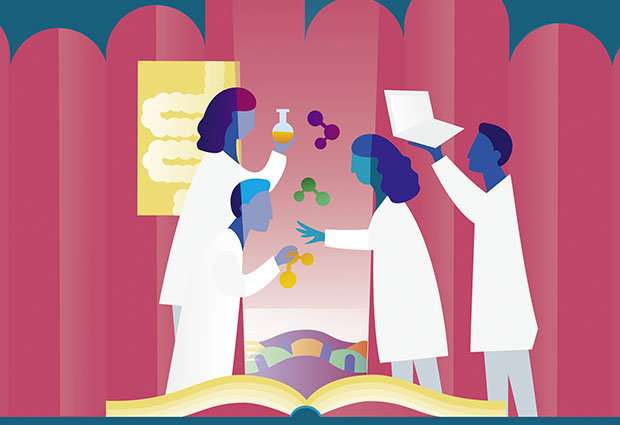Molecular cuisine for gut bacteria

EMBL scientists report in Nature Microbiology on the nutritional preferences and growth characteristics of 96 diverse gut bacterial strains. Their results will help scientists worldwide advance the understanding of the gut microbiome.
The bacteria living in the gut have a big impact on health. But researchers still don't know what kind of food most gut bacteria prefer, or precisely how they metabolise nutrients. The current paper reports on the growth characteristics of the main human gut bacteria in 19 growth media with well-defined recipes. Peer Bork, Kiran Patil and Nassos Typas, all group leaders at EMBL Heidelberg, led the work.
"Our resource provides scientists with tools to experimentally investigate the gut microbiome ecology, going beyond correlations and identifying causes and effects," says Nassos Typas.
The research team selected 96 strains from 72 bacterial species, representing the most frequently occurring and most abundant species in the human gut plus important species linked to infectious or other types of gut diseases, like colorectal cancer and inflammatory bowel disease (IBD). While characterising their nutritional preferences and ability to produce various molecules, the researchers discovered unknown metabolic features of some bacteria.
"We were surprised to find new bacteria with the capability to utilize mucin, the protein that makes up mucus," says Kiran Patil. "These bacteria can contribute to inflammation and infection by weakening the protective mucus barrier lining the gut. Another surprise came from bacteria that proved to be inhibited by amino acids and short-chain fatty acids, common ingredients in most growth media. It turns out that rich media with many nutrients can be toxic for these species, whereas we used to think the more food, the better."
Furthermore, even closely related bacteria sometimes had completely different nutritional preferences. This shows that microbiologists can't base their assumptions about metabolic capabilities on bacteria's genetic relationships alone. The new scientific cookbook is filled with molecular recipes to grow gut bacteria, providing the community with the tools for studying the structure and function of the human gut microbiome.
More information:
Nutritional preferences of human gut bacteria reveal their metabolic idiosyncrasies, Nature Microbiology (2018).
nature.com/articles/doi:10.1038/s41564-018-0123-9
Journal information: Nature Microbiology
Provided by European Molecular Biology Laboratory



















